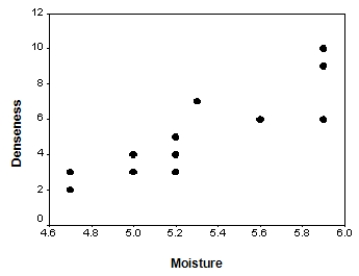Short Answer
The moisture in a wet mix of cement was considered to have an effect on the denseness of the finished product.The moisture of the mix was controlled at various levels,and the denseness of the finished product was measured.The data were entered into SPSS,and the following output was generated. 



 Suppose we wish to test if denseness increases with the moisture in the cement mix: H0: 1 = 0 versus Ha: 1> 0.Do we reject the null hypothesis at the 1% significance level?Include the value of the t statistic and the corresponding P-value in your answer.
Suppose we wish to test if denseness increases with the moisture in the cement mix: H0: 1 = 0 versus Ha: 1> 0.Do we reject the null hypothesis at the 1% significance level?Include the value of the t statistic and the corresponding P-value in your answer.
Correct Answer:

Verified
Yes,we rej...View Answer
Unlock this answer now
Get Access to more Verified Answers free of charge
Correct Answer:
Verified
View Answer
Unlock this answer now
Get Access to more Verified Answers free of charge
Q11: The moisture in a wet mix of
Q12: What is an approximate 95% confidence interval
Q13: A recent study was done to assess
Q14: Do heavier cars use more gasoline? To
Q15: As in most professional sports,statistics are collected
Q17: Which of the following statements about simple
Q18: There is an old saying in golf:
Q19: The statistical model for simple linear regression
Q20: A recent study was done to assess
Q21: In the National Football League (NFL),having an